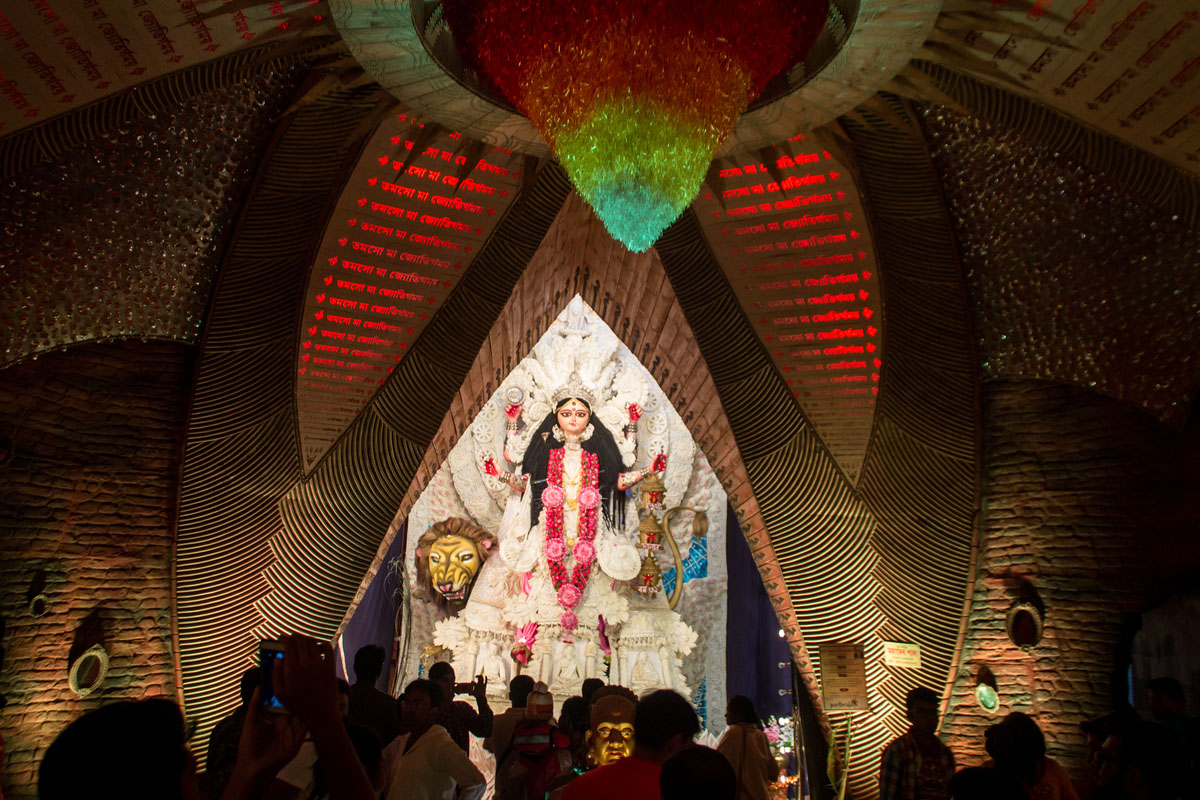Rishra set to welcome lakh of visitors for Jagadhatri Puja
On the day of Jagadhatri Dashami at Chandannagar starts the Rishra Jagadhatri Puja.
At the heart of this ancient town, where history whispers through the cobblestone streets, a tradition as old as 200 years continues to thrive. Malopara’s Jagadhatri Puja, following in the traditions of Raja Krishnachandra Roy, not only weaves together the fabric of community but also narrates a tale of unwavering loyalty.

Chandannagar, West Bengal. (File image)
At the heart of this ancient town, where history whispers through the cobblestone streets, a tradition as old as 200 years continues to thrive. Malopara’s Jagadhatri Puja, following in the traditions of Raja Krishnachandra Roy, not only weaves together the fabric of community but also narrates a tale of unwavering loyalty.
Legend has it that the Malos, known as the Malo i.e. fishermen, once sought permission from Raja Krishnachandra to worship the divine Jagadhatri. The benevolent king, who started Jagadhatri Puja at his palace, not only granted permission but also bestowed upon them a humble offering of Rs 11 for the worship and immersion of the deity. In an era when Rs 11 might seem inconsequential, it’s essential to travel back in time to understand the value of this royal reward.
The gesture by Raja Krishnachandra wasn’t merely a monetary contribution; it was a symbolic endorsement of the Jagadhatri Puja, a tradition that transcends time and still resonates in the heart of Malopara. Jaidev Halder, Jagannath Halder, Nitai Halder, the heads of the puja committee, recount this historical narrative with pride, emphasizing that Malopara’s Jagadhatri Puja stands as one of the oldest pujas in Krishnanagar.
Advertisement
The goddess, named after Jaleswari, holds a legacy that spans two centuries, echoing the devotion of generations. The tradition, upheld meticulously, requires the Rajbari to provide Rs 11 to kick start the Malopara Barwari Pujo each year. It’s a sum that holds not just monetary but cultural significance, ensuring the continuity of a ritual that binds the community together.
As the puja unfolds, it mirrors the customs of Jagadhatri Puja practiced by Sarada’s mother, Shyama Sundaridevi, in Jayrambati. The Ashtami night witnesses a mesmerizing Jal Sajja ceremony, where boys, adorned in the guise of women, honour the goddess. The waterfront comes alive with the rhythmic dance of fishermen, casting nets and working with water, a homage to their roots.
Shyamal Halder, secretary of the puja committee, reveals the alternative name of Malopara’s Jagaddhatri as Jaleshwari, reflecting the deep connection with the watercentric rituals. The meticulous craftsmanship of Chanchal Pal, responsible for sculpting the idol, adds to the divine radiance, while the flickering gas lamps in the pooja mandap create an ethereal ambiance.
Advertisement